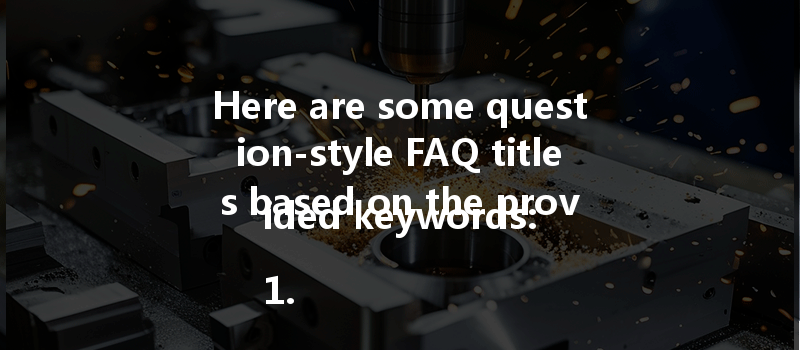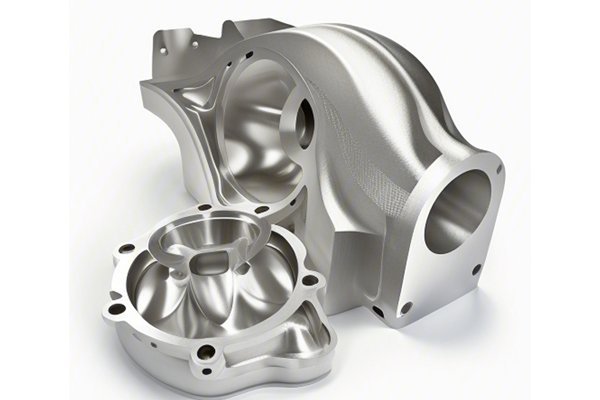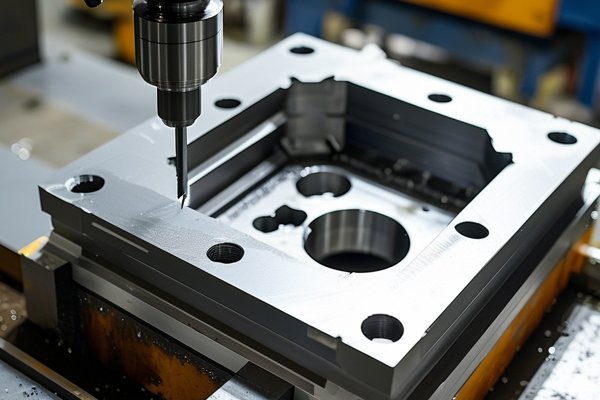Did you know that titanium is one of the most abundant elements in the Earth’s crust, yet it is often referred to as one of the rarest metals on Earth due to its demanding extraction process? Due to its exceptional strength-to-weight ratio and impressive corrosion resistance, titanium is increasingly being used across various industries, particularly in aerospace, automotive, and medical applications.
However, machining titanium to meet specific engineering requirements can be complex and demanding. That’s where Computer Numerical Control (CNC) machining comes into play. In this extensive blog, we’ll delve into the technical requirements and advantages of CNC machining for titanium parts, providing a detailed solution to the associated challenges.
Understanding CNC Machining
What is CNC Machining?
CNC machining is a subtractive manufacturing process that uses computer software to control machine tools. This technology allows for the automated production of precisely machined components through processes such as milling, turning, drilling, and grinding. CNC machining is essential for efficiently producing intricate designs and maintaining stringent tolerances, especially with challenging materials like titanium.
Benefits of CNC Machining for Titanium Parts
—
Technical Requirements for CNC Machining of Titanium Parts
While the advantages of CNC machining are numerous, the technical requirements for working with titanium are complex and should be understood clearly. Below, we break down this topic into critical aspects:
Titanium exists in various grades, making alloy selection crucial. Commonly used titanium alloys include:
Choosing the right titanium alloy based on the application requirements can greatly influence the machining process and final product quality.
When machining titanium, selecting appropriate cutting tools is vital. Manufacturers typically recommend using carbide-based tools due to their hardness and thermal resistance. Coated tools can further enhance performance:
CNC machining of titanium requires careful control of cutting speeds and feed rates:
Using cutting fluids is essential when machining titanium to manage heat. Proper lubrication decreases friction, prolongs tool life, and minimizes thermal deformation. Many manufacturers adopt a high-pressure coolant system to achieve optimal results.
CNC machines used for titanium must possess high rigidity and stability. Machines with high torque capabilities and minimal vibration will provide better outcomes when machining titanium. Furthermore, multi-axis capabilities can enhance the complexity of machining parts.

Effective workholding techniques are vital to ensuring the precision of titanium parts, especially since titanium’s strength can lead to vibrations during machining. Using specialized fixtures or vises to hold pieces securely is crucial.
—
Solutions to Common Problems in CNC Machining of Titanium
Despite its advantages, the CNC machining of titanium presents various challenges. Below we explore common problems and viable solutions to ensure smooth machining processes.
Problem 1: Tool Wear
Solution: Monitor Tool Condition – Regularly check tool wear to maintain optimal performance. Implementing predictive maintenance strategies can help identify when to replace tools before they fail.
Problem 2: Heat Generation
Solution: Effective Cooling – Utilize appropriate coolant systems for heat management. High-pressure systems that deliver directed coolant to the cutting edge can effectively manage heat and enhance performance.
Problem 3: Metal Chips Accumulation
Solution: Chip Management – Implement chip-breaking strategies and suitable chip removal systems to diminish the risks of recutting chips, which can negatively affect surface quality.
Problem 4: Poor Surface Finish
Solution: Optimize Speeds and Feeds – Adjust cutting parameters based on the part geometry and the tool’s performance. Maintaining a proper balance between speed, feed rate, and cutting depth can yield better surface finishes.
Problem 5: Enclosure and Safety
Solution: Implement Safety Protocols – Due to the potential release of fine titanium chips, which can be flammable, appropriate enclosures and safety practices must be instituted to mitigate accidents.
—
Advancements in CNC Machining Technology
As technology progresses, CNC machining continues to evolve, providing even better solutions for titanium manufacturing:
Automation and AI technologies can optimize machining parameters in real-time, adjust operations dynamically based on conditions, and predict maintenance needs.
Using advanced tool materials, such as diamond-coated or polycrystalline cubic boron nitride (PCBN), enhances machining capability and extends tool life when processing titanium.
Modern simulation software helps in predicting machining outcomes and identifying potential problems before actual machining begins, leading to fewer errors and reduced wastage.
—
Real-World Applications of CNC Machining for Titanium Parts
—
In summary, CNC machining of titanium parts offers a multitude of advantages, from precision and efficiency to the capability of producing complex shapes. However, understanding the technical requirements—from alloy selection to tooling and maintenance—is critical to achieving optimal results.
As industries continue to adopt titanium for its unique properties, proficiency in CNC machining techniques becomes increasingly essential. By harnessing the latest technologies and effective machining practices, manufacturers can unlock the full potential of titanium.
Reflecting on the complexities of CNC machining, we remind readers that staying informed and adaptable in this field is paramount. Understanding the nuances of fabricating titanium parts will lead to improved quality, reduced costs, and greater innovation across industries.
The journey of mastering CNC machining techniques is not just about understanding machinery; it is about driving progress in engineering and manufacturing, ensuring that we embrace the technologies that will shape our future.
Related Posts
- How Can Customized CNC Processing of LED Light Radiators Improve Heat Dissipation Efficiency?
- How do CNC aluminum processing manufacturers address the surface treatment requirements of aluminum parts effectively?
- What are the main factors affecting the hourly cost of CNC machining and how can they be managed?






